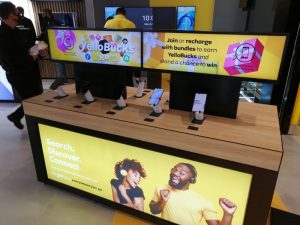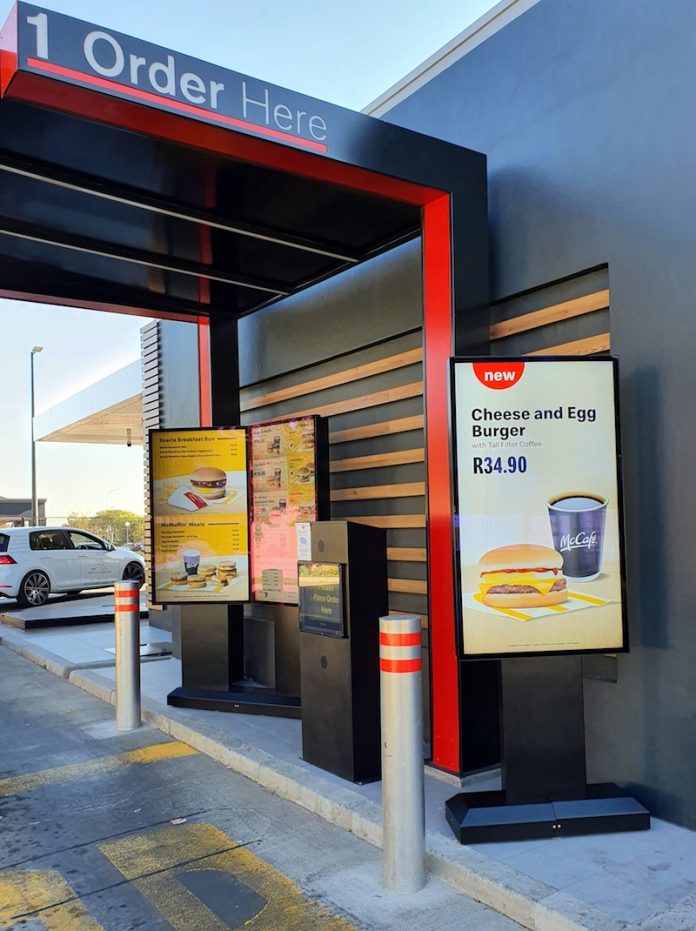Chris Day, Managing Director of Moving Tactics, says it is interesting to look back to see which of the digital signage technologies touted beared up to the scrutiny during the pandemic and are being effectively applied on the ground. The industry had to weigh up how the ‘new normal’ would impact the application of digital displays and what new innovations could be applied to assist clients with the challenges they faced.
‘Having worked through the upheaval of the pandemic with retailers and Quick-Service Restaurants (QSRs), the following technologies have held their own and added enormous value to the way in which these businesses now function,’ said Day.
Digital drive-thru menu boards
Covid-19 meant that in-restaurant dining was either entirely halted or significantly reduced. As vaccinations roll out, in-restaurant dining may once again become a safe experience. However, many countries and individuals are still not returning to indoor dining and are still relying on takeaways. One of the most popular and value-add technologies has been digital menu boards, which have been applied to drive-thru’s and inside restaurants. McDonald’s is one such QSR-group that has opted to introduce digital signage menu boards throughout its business.
‘During the pandemic, McDonald’s discovered that digital signage was critical to making quick changes on the fly and in so doing, remain flexible and agile as a business. They have decided to employ a range of digital menu boards, self-service terminals, and drive-thru menu boards as solutions,’ said Kevin Bierman, Head of Digital Signage at Moving Tactics.
Virtual queueing
Enforcing social distancing in-store can be difficult, especially when it comes to queueing. To answer this dilemma, Clicks has implemented a Virtual Queue solution. This system allows customers to check in, maintain their place in line and be notified via SMS when it is their turn for service, which ultimately removes the need for customers to physically stand in a queue, and at the same time, keep shopping.

According to Scott Matthews, Head of Moving Tactics Retail Analytics, ‘By employing virtual queuing, retailers are in a position to seamlessly introduce social distancing measures. In this way, solutions like virtual queueing may become the norm for retailers and shoppers.’
Another innovation to the Virtual Queue solution that retailers like Clicks may apply is the new Covid-vaccine button, which alerts the in-store nurse to the fact that a vaccine appointment has arrived.
Non-touch tables and digital displays
Brands such as Samsung and MTN are designing their stores around non-touch tables and displays so that customers get to interact with products and obtain the information required without physically touching any surfaces. ‘Gesture recognition and motion sensor technologies are becoming more commonplace and we’ve experienced increased interest from clients wanting to implement these innovations in their ‘stores of the future’,’ said Bierman.

MOVING TACTICS
www.movingtactics.co.za










